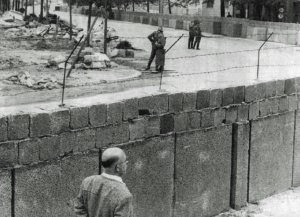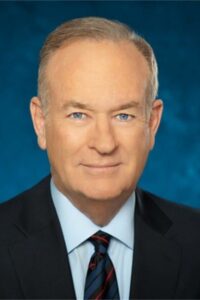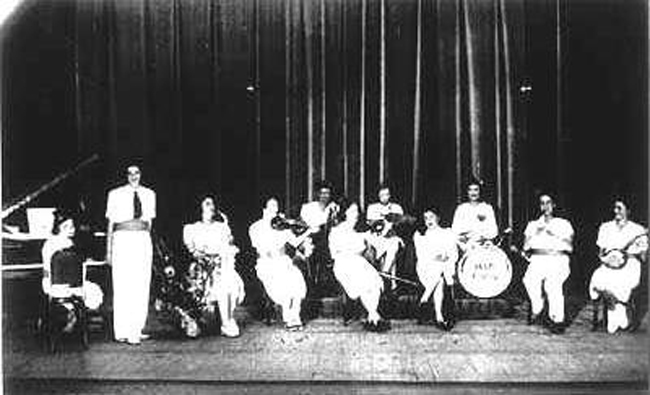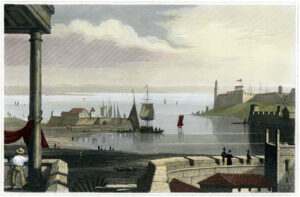by Bill O’Reilly and Josh Hammer
An instant New York Times bestseller, Confronting Evil by Bill O’Reilly and Josh Hammer is a dramatic face-off with the good, evil, and the worst people who ever lived. Read on for a featured excerpt focusing on Vladimir Putin.
Chapter Eleven: Vladimir Putin
Dresden, East Germany
December 5, 1989
Morning
The Red Menace is unraveling.
Lieutenant Colonel Vladimir Putin stares with rage through the frosted window of his office inside the KGB headquarters. The unassuming three-story villa is in the center of Dresden, one of the few buildings to withstand the Allied bombing campaign against Nazi Germany. Now, the town of five hundred thousand people is controlled by the Communist Party in East Berlin, which takes its orders from Moscow.
The KGB building boasts a communal kitchen, a recreation room, an armory, accommodations for visiting diplomats, and a lavish ballroom adorned with marble busts of Joseph Stalin and Vladimir Lenin.
On the ground floor, a hidden door reveals a subterranean complex of prison cells, torture chambers, and an execution space that is frequently used.
Three stories above, the thirty-seven-year-old Putin runs a vast network of undercover agents for his superiors in the Kremlin. His men have infiltrated many governments in Europe, including France, Great Britain, and Italy.
The lieutenant colonel wears a brown suit, green tie, and smokes his favorite brand of German cigarettes, F6 Filters, exhaling plumes of tobacco as he watches a violent spectacle unfold on the street below. Putin is a muscular man of average height with blond hair slicked to the side. A thin mustache lines his upper lip.
The KGB man extinguishes his cigarette.
Removing a loaded pistol from his belt, Putin places it on the windowsill next to an ashtray. The gun is an anniversary gift from his wife Lyudmila.
Outside, an angry mob is gathering.
* * *
It has been a fast rise for Vladimir Putin.
Born to World War II veterans and raised in the slums of Leningrad, the young man earns a rough reputation as a local gang leader and judo champion. He quickly gains the attention of undercover KGB agents and is recruited into the agency.
* * *
The twenty-two-year-old Putin is trained in hand-to-hand combat, counterintelligence, and torture. His first assignment is the surveillance of foreigners in Leningrad. For five years, Vladimir hunts Russia’s perceived enemies. Dozens of alleged spies are taken into custody by the KGB. Many are innocent. Some vanish.
The Communist leaders in Moscow are pleased.
In 1985, Putin is promoted to lieutenant colonel and assigned to lead the KGB’s operations in East Germany, a major job.
There, his training in torture is put to use.
First target: Freya Klier.
The pro-Western theater director is allegedly spreading “democratic propaganda” through underground newsletters. Under Putin’s order, the thirty-six-year-old woman is placed under constant surveillance. She is soon arrested in Dresden and subjected to “Zersetzung”—corrosion. For weeks, she endures isolation, surveillance, threats, and efforts to destroy her reputation and personal relationships.
Freya ultimately relents.
Facing certain death, the activist accepts expulsion from Dresden and is forcibly relocated to West Germany, destitute and alone.
Freya Klier escapes with her life. Many of Putin’s enemies are not so fortunate.
* * *
Dresden is on edge.
Across the street from Colonel Putin’s headquarters is the main office of the Ministerium für Staatssicherheit, Ministry of State Secrets. To Germans, this place is known to house the dreaded Stasi. Modeled after the Nazi SS, tens of thousands of plain-clothed agents scour East Germany arresting all “political opponents.”
The Stasi officially operates under orders from East Berlin, but the group is really controlled by the KGB—and Putin himself.
Over the years, millions of innocent civilians are detained. Many are violently interrogated. Some die. Subjected to torture, family members (including children) testify against each other. The East German police state descends into barbarity.
* * *
Communism is collapsing.
After half a century of repression and murder, pro-democracy movements are sweeping the continent. In November 1989, thousands of protesters dismantle the Berlin Wall—the symbolic and physical barrier between totalitarianism and democracy.

Germany, divided into two countries since its defeat in World War II, is in turmoil. The Marxist government that controls the eastern half of the nation is disintegrating quickly.
Vladimir Putin is bearing witness. He does not like it.
* * *
Drastic measures are approved.
Putin’s modest second-story office is a hive of activity. There, the ruthless colonel conducts meetings under a framed portrait of Soviet leader Mikhail Gorbachev. Privately, he detests Gorbachev for embracing some capitalist reforms. For Putin, an admirer of Stalin, these are acts of treason, but, at this point, Putin’s political leanings matter not. A pro-democracy demonstration has now reached the offices of the KGB.
Spurred by the protest, Colonel Putin calmly walks toward his desk, removes a key from his breast pocket, and unlocks a hidden drawer. He retrieves a white folder with red lettering:
Секретный материал для Советского государства
Sensitive Material for the Soviet State
The document details information about the KGB’s extensive network of spies throughout Europe: names, dates, locations. This information cannot fall into the hands of the enemy.
Putin takes a silver cigarette lighter and sets the material ablaze; the flaming pages are thrown into a metallic waste bin.
Outside, the agitated crowd grows even larger.
Putin walks to the window. He sees thousands of activists, some waving American flags. That is a crime punishable by death in East Germany. But now anarchy reigns.
Suddenly, rocks smash through the windows of the Stasi and KGB headquarters. Soviet guards draw their machine guns. Putin himself has seen enough.
He walks toward a wooden bureau, retrieving his military uniform: jet-black fatigues, shirt, and tie. His collars are affixed with Soviet stars. A Communist Party pin hangs from his left lapel. He holsters a pistol on his right hip.
Though the temperature outside is nearly zero, Putin wears no jacket or hat as he walks out of the building to face the protesters.
* * *
At this point, about fifty thousand freedom seekers are roaming the streets of Dresden. They are targeting any Russian presence. After gathering in the city center, the group marches toward Putin’s KGB building on the northern bank of the Elbe River.
The mob quickly turns violent, storming buildings, screaming, “Freiheit!”—“Freedom!” The guards are overwhelmed. Hundreds of civilians try to breach the KGB complex to search for missing family members.
The Russian guards quickly leave the street, retreating inside Putin’s headquarters.
Panic ensues.
Suddenly, the wooden door of the KGB villa swings open.
Vladimir Putin emerges onto the street with a pistol drawn. He is alone.
The Russian spy marches toward the furious mob. The group falls silent. Without emotion, Putin issues the following declaration in fluent German:
Don’t try to force your way into this property. My comrades are armed, and I have authorized them to use their weapons in an emergency. Disperse now or face the consequences. You have ten minutes.
* * *
Somewhat amazingly, the crowd disbands. Many have experienced past violence.
Putin then returns to his office, picking up a telephone with direct access to the Kremlin. Five minutes later, Sergei Akhromeyev, leader of the Soviet Army, is on the line. Putin requests two tanks be dispatched for his protection.
He is denied. No further explanation is forthcoming.
Instead, Putin receives a terse order: “Burn everything.”
Start listening to an audio excerpt of Confronting Evil!
Confronting Evil. Copyright © 2025 by Bill O’Reilly and Josh Hammer. All rights reserved.

BILL O’REILLY is a trailblazing TV journalist who has experienced unprecedented success on cable news and in writing eighteen national number-one bestselling nonfiction books. There are more than eighteen million books in the Killing series in print. He lives on Long Island.

JOSH HAMMER studied political theory at The George Washington University and international politics at the University of Edinburgh, Scotland. He writes and produces many successful programs including The O’Reilly Update with Bill O’Reilly. He lives in Brooklyn, New York.
The post Featured Excerpt: Confronting Evil appeared first on The History Reader.




0 Comments